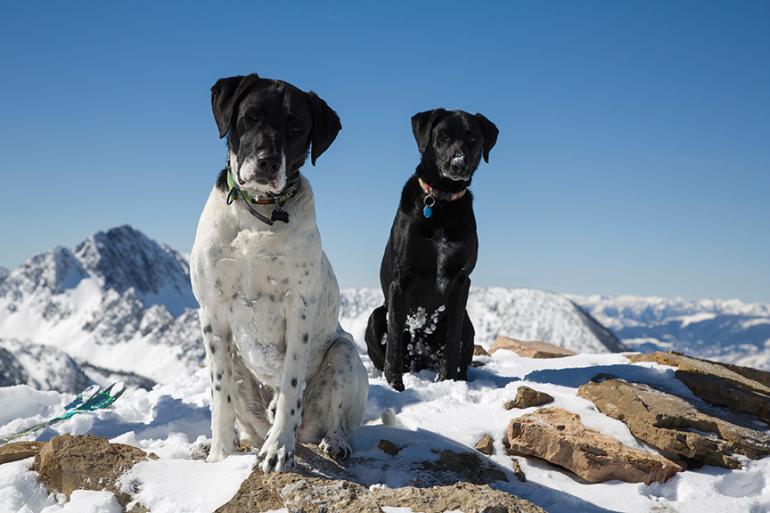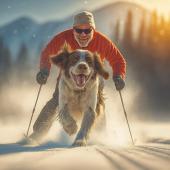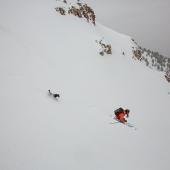Hounded
Winter ailments in dogs.
While the cold of winter presents a host of dangers to us humans, it also threatens the health and wellness of our canine companions. In light of that fact, there are specific ailments that are more common and should be watched for as the temps start to dip and the snow settles in. Here are two to consider while you’re outside this winter.
Frostbite
Dogs perspire from the edges of their pads. Exertion in cold, snowy weather results in the perspiration freezing into ice balls that cling on the hairs around the pads and between the toes. In subzero conditions, this can lead to frostbite of the feet. Other areas prone to frostbite are the lower flanks, the vulva of bitches in heat, and the sheath of male dogs.
Causes: Buildup of ice between the toes in subzero temperatures; inadequate nutrition for the conditions; exhaustion; poor observation by the guardian.
Signs: Frozen body parts; dog alternately carrying one foot or another; skin whitish and hard and frozen to the touch; frozen ears, prepuce, hocks, and tail.
Prevention: Clip the hair between the toes to minimize the buildup of ice. Acclimatize your dog to cold conditions. Opt to use properly fitting booties on the dog. Adequate nutrition and frequent drinking are important in avoiding frostbite and exhaustion. Keep in mind that cold, bitter weather increases fluid and nutritional demands and plan accordingly.
Treatment: If the area can be subsequently dried, soak the frozen tissue in cool, then warm (but not hot), water. Dry the area and lightly massage it. Provide warmth, nourishment, and rest.
You can administer anti-inflammatory drugs as prescribed by your veterinarian to help restore circulation and minimize the pain and swelling of thawing. Enteric-coated aspirin can be given at 2.5 mg/lb every 12 hours with food. Aspirin should not be given with other anti-inflammatory drugs.
Hypothermia
Causes: Exhaustion in cold or wet weather; inadequate nutrition; underlying illness.
Signs: Dizzy, weak, and cold dog, especially after long exertion and exposure to bitter conditions; low temperature; dehydrated—measure hydration by feeling inside the mouth, which should be wet and warm, rather than dry and cold.
Prevention: Adequate conditioning, warmth, and nutrition. Attention to and knowledge of pre-existing medical conditions (regular checkups).
Treatment: Protect your dog from the elements, supply warmth, and give him a full body massage. Provide fluids and nourishment. It is important that you allow your dog to rest before proceeding. Repeated bouts of weakness may indicate the presence of serious metabolic conditions or altitude sickness. Warmed Lactated Ringers can be given at the rate of 100cc per ten pounds if one is certain pulmonary edema, congestive heart failure, or altitude sickness are not present.
Sid Gustafson practices his holistic approach to animal health at the Veterinary Clinic of Big Sky. His latest novel is Swift Dam.











